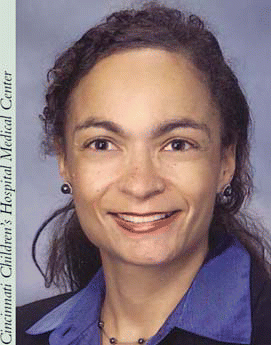Chicago-Consider this: Over the past two decades, data from both the Surveillance, Epidemiology, and End Results (SEER) program and the National Cancer Database indicate that the survival rates for patients with laryngeal cancer have decreased. During this same time period, the use of nonsurgical treatments for these patients has increased. Is there a relationship?
Explore This Issue
July 2006And this: Laryngomalacia is a common, yet still somewhat enigmatic, disease. There are a variety of factors that influence the varying degrees of symptoms and disease severity seen in infants with laryngomalacia. But what do we know about the etiology of the disease and the factors that contribute to the wide spectrum symptoms and outcomes?
While prospective, controlled trials are the gold standard [for evaluating laryngeal cancer treatments], there are clearly some flaws that can be uncovered through review of tumor registries, such as SEER and the National Cancer Database.
Those are just two of the questions addressed in this year’s two Mosher Award-winning theses, which were presented as part of the Triological Society’s program here at the 2006 Combined Otolaryngology Spring Meeting (COSM).
Laryngeal Cancer: Demographics, Patterns of Care, and Survival Rates
The last large study of laryngeal cancer in the United States was published in 1997 and compared management in the early 1980s to management in the early 1990s. Over that same time period, data show that the use of irradiation increased and use of surgery as a single treatment modality decreased. A major impetus for that change arose from Veterans Administration Cancer Study Group findings, first published in 1991, that suggested the treatment of advanced laryngeal cancer with induction chemotherapy followed by radiation allows some patients to preserve their larynx without sacrificing cure rates.
This led some researchers to relate that total laryngectomy was no longer useful in the initial treatment of laryngeal cancer and prompted others to identify that, even if survivals are only equivalent, organ-preservation approaches should be the treatment of choice, said thesis author Henry T. Hoffman, MD, Professor of Otolaryngology-Head and Neck Surgery at the University of Iowa in Iowa City. However, this raises the question as to whether organ preservation approaches provide equivalent survival when offered outside of a controlled study.
While prospective, controlled trials are the gold standard, Dr. Hoffman said, there are clearly some flaws that can be uncovered through review of tumor registries, such as SEER and the National Cancer Database (NCDB).
Mining Tumor Registries
The National Cancer Database accrues 60 percent of its patients from community hospitals, so this is truly a reality check showing what’s going on in the country, Dr. Hoffman said. The SEER data set samples approximately 25 percent of the US and identified statistically significant improvement in survival from the mid 1980s to the mid 1990s for 23 of the 24 cancer sites examined. The single site that showed a decrease across these time periods was the larynx.
This led some researchers to relate that total laryngectomy was no longer useful in the initial treatment of laryngeal cancer…. However, this raises the question as to whether organ preservation approaches provide equivalent survival when offered outside of a controlled study. – -Henry T. Hoffman, MD
It’s perplexing to many of us as to why some infants present with mild inconsequential expiratory stridor that gets better over time, others have swallowing difficulty and are considered to have moderate disease, and then there are those that are severe and have cardiopulmonary complications like hypoxia, chronic cyanosis, and significant stridor. – -Dana M. Thompson, MD
The SEER Data Set shows an improvement overall for cancer survival in the United States across those years, despite the concurrent decline in survival for laryngeal cancer. Dr. Hoffman and his colleagues reviewed the NCDB to confirm these findings and to examine a variety of hypotheses as to why the decrease in survival has occurred, including the possibility that the decrease was actually an artifact of the database.
Our review of the NCDB identified over 158,000 cases accrued over a 15-year period, and this review did support the SEER data findings identifying a decline in survival for laryngeal cancer from the mid 80s to the mid 90s, Dr. Hoffman said. This decline in survival more markedly affected supraglottic cancers but also affected glottic cancers as well.
Why the Decline?
Among the hypotheses they considered as potential contributing factors in the decreased survival rates were an increase in the proportion of advanced stage cancers during those years; a change in the racial profile of patients with laryngeal cancer; and the proportion of smokers in the United States over that same time period. Upon examination, however, these were all determined to be non-contributing factors.
This leads to the concept that the changing patterns of treatment may be the cause for the diminished survival, Dr. Hoffman said. And the most marked change in patterns of treatment has been the increased use of nonsurgical treatment with irradiation and chemotherapy, while the use of surgery alone has decreased, including the use of endoscopic surgical management.
Further analysis of data both within the NCDB and through systematic review of individual patient charts through a separate national survey mechanism is currently under design to further evaluate these associations.
Novel Theory of Laryngomalacia Etiology
Although laryngomalacia is the most common cause of infant stridor and the most common laryngeal anomaly, there are many things physicians and researchers still don’t know about this disease.
It’s perplexing to many of us as to why some infants present with mild inconsequential expiratory stridor that gets better over time, others have swallowing difficulty and are considered to have moderate disease, and then there are those that are severe and have cardiopulmonary complications like hypoxia, chronic cyanosis, and significant stridor, said Dana M. Thompson, MD, in discussing her award-winning thesis. Dr. Thompson is Associate Professor of Otolaryngology at Cincinnati Children’s Hospital Medical Center (Ohio).
Another perplexing aspect of laryngomalacia is the association of gastroesophageal reflux disease (GERD). This has been underexplored, but it’s intuitive to those of us who have managed these children that reflux does have a role, Dr. Thompson said. The one thing that we do know is that laryngeal tone is weak, but why it’s weak is unknown.
Diverse Theories of Etiology
Among the theories that have been introduced since the disease was first described in the 19th century are the anatomic theory, which proposes abnormal anatomic placement of the supraglottic laryngeal tissue, and the cartilaginous theory, which suggests abnormal cartilage formation.
However, the neurologic theory of disease etiology for laryngomalacia is probably the one that is best supported in the literature, Dr. Thompson said, noting past studies suggesting that up to 20% of laryngomalacic children had neurologic disease.
The other fact is that we know, in adults, a central nervous system insult, particularly at the brain stem, can result in the findings of acquired laryngomalacia, she said. Also, sedative medications can lead to a laryngomalacic-like state and symptoms.
Role of Reflux
Apart from the disease etiology, a key factor is laryngeal adductor reflux, which is a vaguely mediated reflux responsible for laryngeal tone, but also has additional contributions for airway protection and swallowing function.
This is a very complex, neurologically integrated reflux with both peripheral and central components, Dr. Thompson said. This is the reflux that is responsible for laryngeal tone. What happens when this reflux goes awry is that you get abnormal sensorimotor integration, and this can occur either at the peripheral level or at the efferent level.
In looking at these and a variety of other considerations, Dr. Thompson hypothesized that infants with laryngomalacia-particularly those with moderate and severe disease-exhibit elevated thresholds, which lead to the signs and symptoms of laryngomalacia, including aspiration, breathing problems, apnea, and the inability to efficiently swallow or clear stimulus.
So the goal of this study was to further elucidate disease etiology of laryngomalacia by exploring the laryngopharyngeal sensory-testing aspect of integration of airway patency and tone, she said. Also, because there is such a wide spectrum of disease severity, we wanted to try and understand what factors may influence the disease spectrum, so we explored medical comorbidities, demographic characteristics, and disease presentation.
Altered Reflexes Play Role in Etiology
Dr. Thompson and her colleagues looked at 201 infants with laryngomalacia. The disease was confirmed by flexible laryngoscopy and sensory testing. Patients were divided into three groups based on level of disease severity-mild, moderate, and severe-and were followed prospectively until symptoms resolved or subjects were lost to follow-up. Sensorimotor integrative function of the larynx was evaluated by laryngopharyngeal sensory testing of the laryngeal adductor reflex. Medical records were retrospectively reviewed for comorbidities.
The study concluded that, where laryngeal tone and sensorimotor integrative function of the larynx is altered, the degree of alteration correlated with disease severity. This indicates factors that alter the peripheral and central reflexes of the laryngeal adductor reflux have a role in the etiology of the disease. Factors such as GERD, neurologic disease, and low Apgar scores influenced severity and clinical course, which explains the spectrum of disease symptoms and outcomes.
©2006 The Triological Society


Leave a Reply